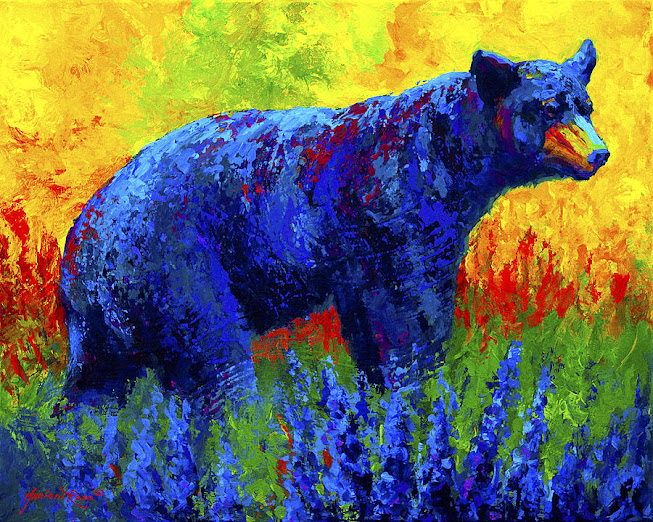Mid Modern Civil Rights Movement & Art
Civil Rights Movement & Art Work
After WW2, the Civil Rights Movement had started making waves. One thing I've always loved about art is the impact and power it can have, through expression on real and or current issues. I decided to do my assignment on the impact art may have had on the movement during and after. Through research I discovered art wasn't really allowed to be publicly political around this time. Pieces weren't typically published or displayed greatly. It didn't seem to be recognized as such until more afterwards. I put together pieces of art from during/after civil rights movement really began, that powerfully express the turmoil and injustice, of that time period, but that for many still spark emotion.
American People #18, Faith Ringgold 1967 oil on canvas
Through my research, it consistently pointed that Ringgold played a large role in impactful art surrounding the civil rights movement, specifically with her series, American People series and Black Light series. (Many Artists Contributed Their Visual Voices to the Civil Rights Movement, undated)
This piece is powerful, emotional. As I read about Ringgold it seemed she desired to cause discomfort, display the rising tension she was seeing in her life (American People, Black Light: Faith Ringgold’s Paintings of the 1960s | Exhibition | NMWA, 2022). She used lots of lines, and shapes to create this piece. Of course she uses color, like other civil right focused pieces, she uses the colors of red, white and blue appear to provoke emotion. Each are american, deserving of their rights and life as humans. Blood, to show the pain and hurt you can't simply erase, like the bloodshed of those lost to evil people.
Norman Lewis, Evening Rendezvous, 1962 oil on linen
Most new york art critics in the 1950s and 1960s insisted that painting could be nothing except painting. Artists risked the loss of sales and bad press if they argued otherwise, but that didn't eliminate what could be seen here. Lewis proclaimed art was meant to solely express man's relative endeavors while seeming to go close to forbidden terrority of painting, implying things about race and rights. Norman combines intentional brushstrokes, tone, lines, and color to create this piece. This he abstract dabs of white emerging from gray twilight are hooded klansmen gathered around a bonfire, which is suggested by the hot red centers. The blue is supposed to be smoke, though its a larger play on the red white and blue of American pride.
Andy Warhol, Race Riot, 1964
Andy Warhol wasn't known for his serious artwork, but this piece was impactful for its time. Repetition of the same image and use of color is thought to encourage the viewer to keep looking and thinking about the subject. (Civil Rights Art, 2015) This style is called Pop Art but the photograph repeated is police officers of Birmingham sticking attack dogs on retreating black man. At this time, and still now red white and blue colored sparks so much emotion; for many pride, pride of their country. Yet, who would have pride in what this image is capturing? It sparks emotion, power, and thought. It also intrigues me the placement of two red boxes; looking at just the red boxes makes me think of blood, or feel fear honestly. It was strategic design and placement by the artist, to spark emotion.
The Problem We All Live With, Norman Rockwell 1964
This painting is done by Norman Rockwell was intent on capturing the moment Ruby Bridges, the first black child to attend an all-white public school in New Orleans, after the legal ruling during the process of racial desegregation. Federal agents escorted her to school. This particular piece went on to be very impactful, displaying this, at the time huge step towards equality. Norman beautifully combines lines, tone, and color while intentionally displaying this moment from a specific angle. Highlighting exclusively Ruby, and the details of the background, while also using contrasting colors. This piece left me in awe, just imagining this happening, a simple sweet girl talking to school; yet she must be escorted by federal agents to be safe.
References
"Civil Rights Art". Art Class Curator, 2015, https://artclasscurator.com/civil-rights-movement-art/.
"American People, Black Light: Faith Ringgold’S Paintings Of The 1960S | Exhibition | NMWA". NMWA, 2022, https://nmwa.org/exhibitions/american-people-black-light/.
"Many Artists Contributed Their Visual Voices To The Civil Rights Movement". Thoughtco, 2022, https://www.thoughtco.com/art-of-the-civil-rights-movement-2578424#:~:text=%20Faith%20Ringgold%20%28b.%201930%29%2C%20included%20in%20the,People%20series%20%281962-1967%29%20and%20Black%20Light%20series%20%281967-1969%29.https://www.thoughtco.com/art-of-the-civil-rights-movement-2578424#:~:text=%20Faith%20Ringgold%20%28b.%201930%29%2C%20included%20in%20the,People%20series%20%281962-1967%29%20and%20Black%20Light%20series%20%281967-1969%29.
Esaak, Shelley. ""The Problem We All Live With" By Norman Rockwell". Thoughtco, 2019, https://www.thoughtco.com/the-problem-we-all-live-with-rockwell-183005.
"Evening Rendezvous". Smithsonian American Art Museum, https://americanart.si.edu/artwork/evening-rendezvous-33910.
Marder, Lisa. "Many Artists Contributed Their Visual Voices To The Civil Rights Movement". Thoughtco, 2018, https://www.thoughtco.com/art-of-the-civil-rights-movement-2578424#:~:text=%20Faith%20Ringgold%20%28b.%201930%29%2C%20included%20in%20the,People%20series%20%281962-1967%29%20and%20Black%20Light%20series%20%281967-1969%29.
"Norman Rockwell And Race: Complicating Rockwell’S Legacy - University Libraries | Washington University In St. Louis". University Libraries | Washington University In St. Louis, https://library.wustl.edu/news/norman-rockwell-and-race-complicating-rockwells-legacy/.




.jpeg)




Comments
Post a Comment